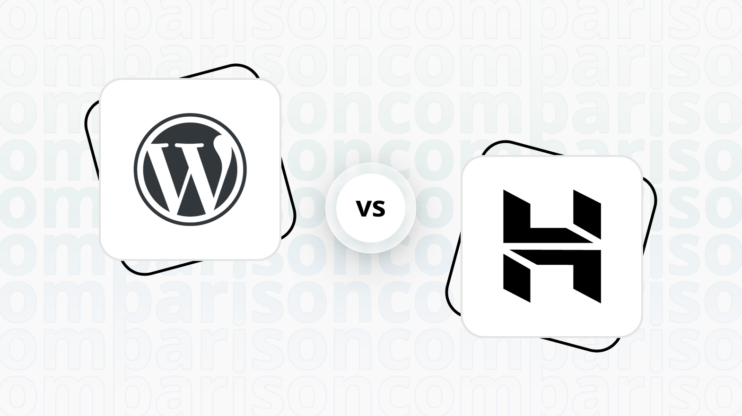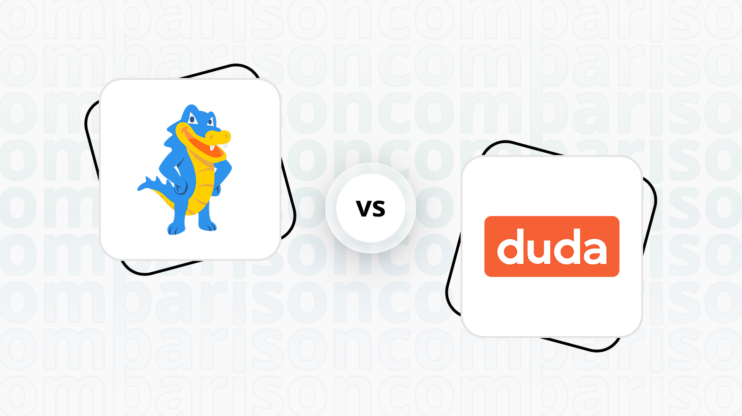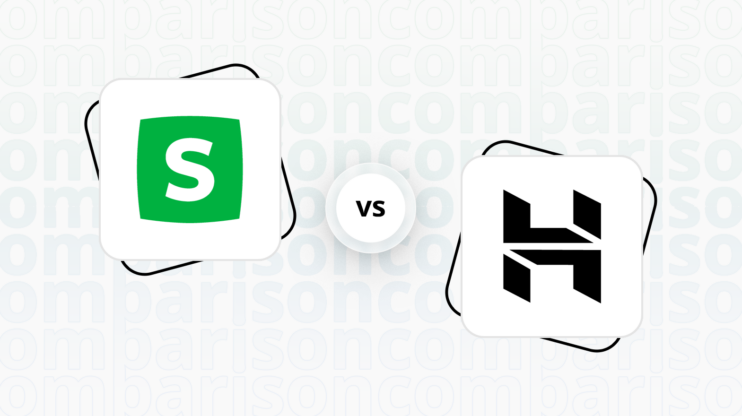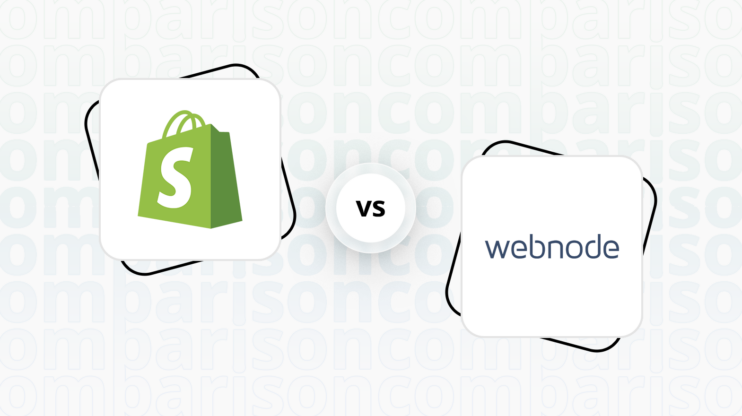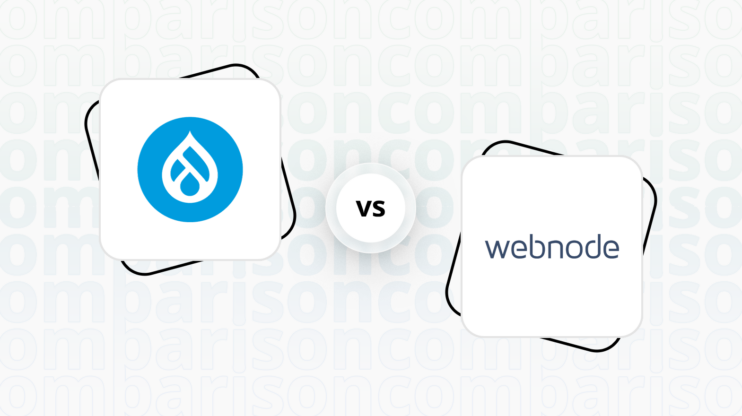Drupal vs Pixpa: Final verdict
Drupal and Pixpa both offer unique strengths, catering to different user needs and preferences.
-
Drupal (Overall Grade: 6.4/10)
is a powerful open-source CMS known for its flexibility and extensibility. It is ideal for developers and users who need to build complex websites with custom functionalities. Drupal offers a wide range of modules and themes, making it suitable for various types of websites, from personal blogs to corporate and government sites. However, its steep learning curve and need for technical expertise can be challenging for beginners. -
Pixpa (Overall Grade: 6.7/10)
excels as an all-in-one platform for creatives and small businesses. It provides an intuitive drag-and-drop interface, making it easy for users to design and manage their websites without coding knowledge. Pixpa’s customizable templates, built-in ecommerce features, and tools for SEO and marketing make it a great choice for users looking to establish a professional online presence quickly and efficiently. While it may not offer the same level of customization as Drupal, its user-friendly approach and comprehensive support make it accessible to a broader audience.

|

|
|
|---|---|---|
|
Design functionalities & templates |
7.8 |
7.8 |
|
Ease of use |
5.4 |
8.4 |
|
Ecommerce |
7.5 |
7.0 |
|
Website Editors |
7.5 |
7.5 |
|
Product testing options |
7.1 |
8.5 |
|
Price |
5.7 |
9.1 |
|
Hosting quality |
0 |
5.4 |
|
Website speed optimization |
6.4 |
3.0 |
|
Plugins and integrations |
8.6 |
6.7 |
|
Marketing features |
8.0 |
7.4 |
|
Customer support |
6.7 |
7.0 |
|
Security |
8.3 |
8.3 |
|
AI capabilities |
7.5 |
0.0 |
|
User Management |
9.1 |
7.3 |
Which one is the best for ecommerce: Drupal or Pixpa?
 7.5
7.5
 7.0
7.0
Verdict
: Drupal is ideal for those needing extensive customization and scalability, while Pixpa is better suited for creatives and small businesses looking for simplicity and ease of use.
-
Drupal
: Known for its flexibility and extensibility, Drupal is a powerful open-source CMS that can handle complex ecommerce needs through its Drupal Commerce module. It offers a wide range of features, including product management, payment gateway integration, and customizable workflows. However, it has a steep learning curve and may require extensive customization, making it more suitable for developers and larger businesses. -
Pixpa
: Pixpa is an all-in-one platform designed for creatives and small businesses. It offers a user-friendly drag-and-drop interface and a range of ecommerce features, including an integrated shopping cart and inventory tracking. While it may not match Drupal’s scalability and customization options, Pixpa is ideal for users without coding knowledge who need a straightforward solution for their online store.
Which one is the best for informational and business websites?
 7.5
7.5
 7.9
7.9
Verdict
: When it comes to creating informational and business websites, Pixpa slightly edges out Drupal due to its user-friendly interface and built-in features tailored for creatives and small businesses. However, Drupal’s flexibility and extensive customization options make it a strong contender for more complex and scalable projects.
-
Drupal
: Drupal is a powerful open-source CMS known for its flexibility and extensibility, making it suitable for a wide range of websites, from personal blogs to corporate and government sites. It offers a vast array of modules and themes, allowing for extensive customization. However, its steep learning curve can be a barrier for beginners, making it more suitable for users with technical expertise or those willing to invest time in learning the platform. Drupal scores 7.5 in this category. -
Pixpa
: Pixpa is an all-in-one platform designed for creatives and small businesses, offering a drag-and-drop interface that simplifies website creation and management. It provides highly customizable templates and built-in tools for SEO, marketing, and analytics, making it easy for users to grow their online presence. Pixpa’s user-friendly approach and comprehensive feature set make it an excellent choice for those looking to create professional and visually appealing informational websites without needing technical skills. Pixpa scores 7.9 in this category.
Drupal vs Pixpa: Detailed comparison
Design functionalities & templates
Design FunctionalitiesRepresents how well each platform allows for creative design and customization of websites.Score Components:
- Template Variety (30%): Range and quality of design templates.
- Customization (30%): Flexibility and options for design alterations.
- User Interface (20%): Ease and intuitiveness of the design process.
- Responsiveness (10%): Adaptability to different devices and screen sizes.
- Innovation (10%): Unique design features and tools.
 7.8
7.8
 7.8
7.8
Winner: Tie.
Both Drupal and Pixpa offer a wide range of design functionalities and templates, making them both great choices for building a website.
Drupal, as a highly flexible and powerful content management system, offers a vast array of templates and designs to cater to virtually any website need. With thousands of themes available, users can choose from minimalist designs, industry-specific layouts, and highly customizable multipurpose themes.
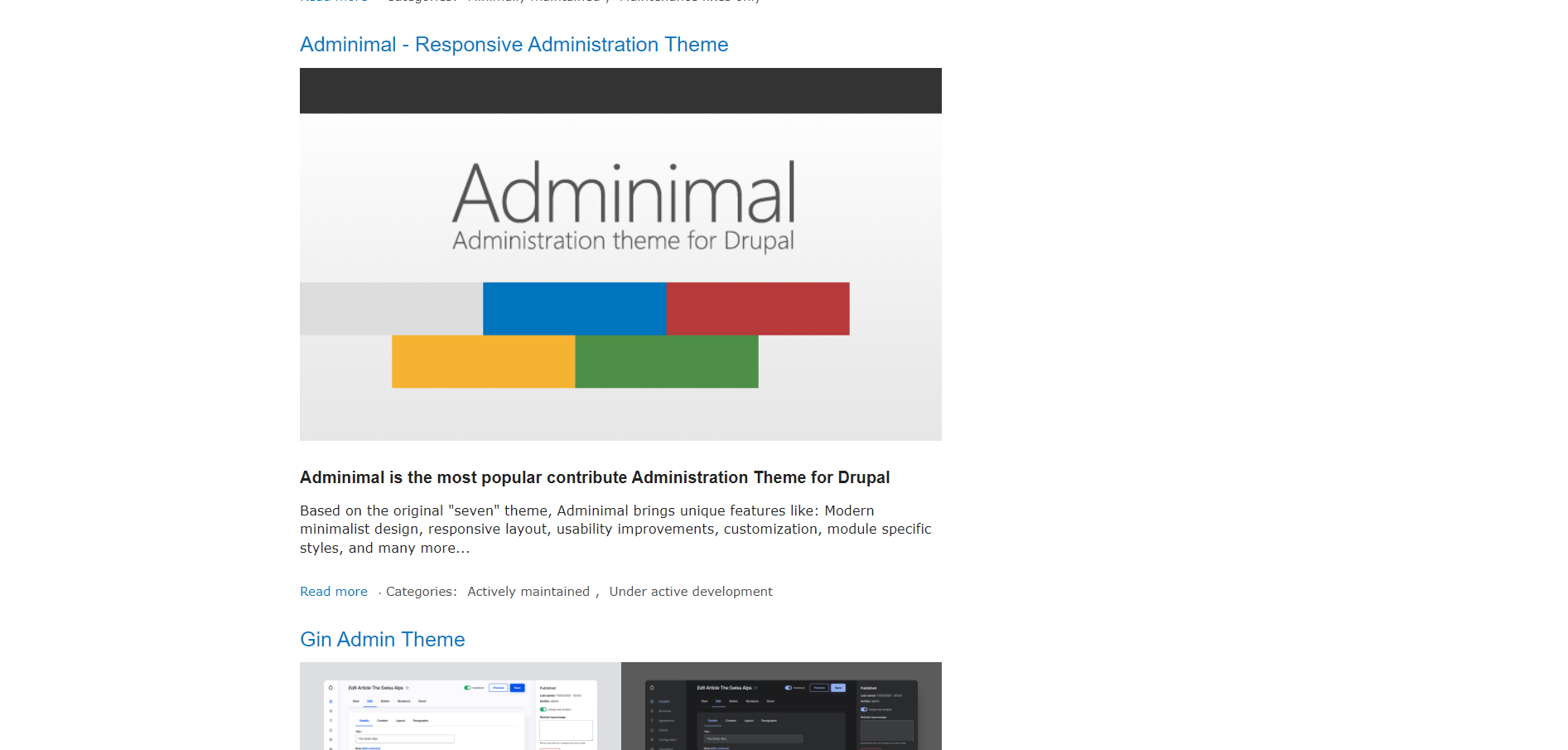
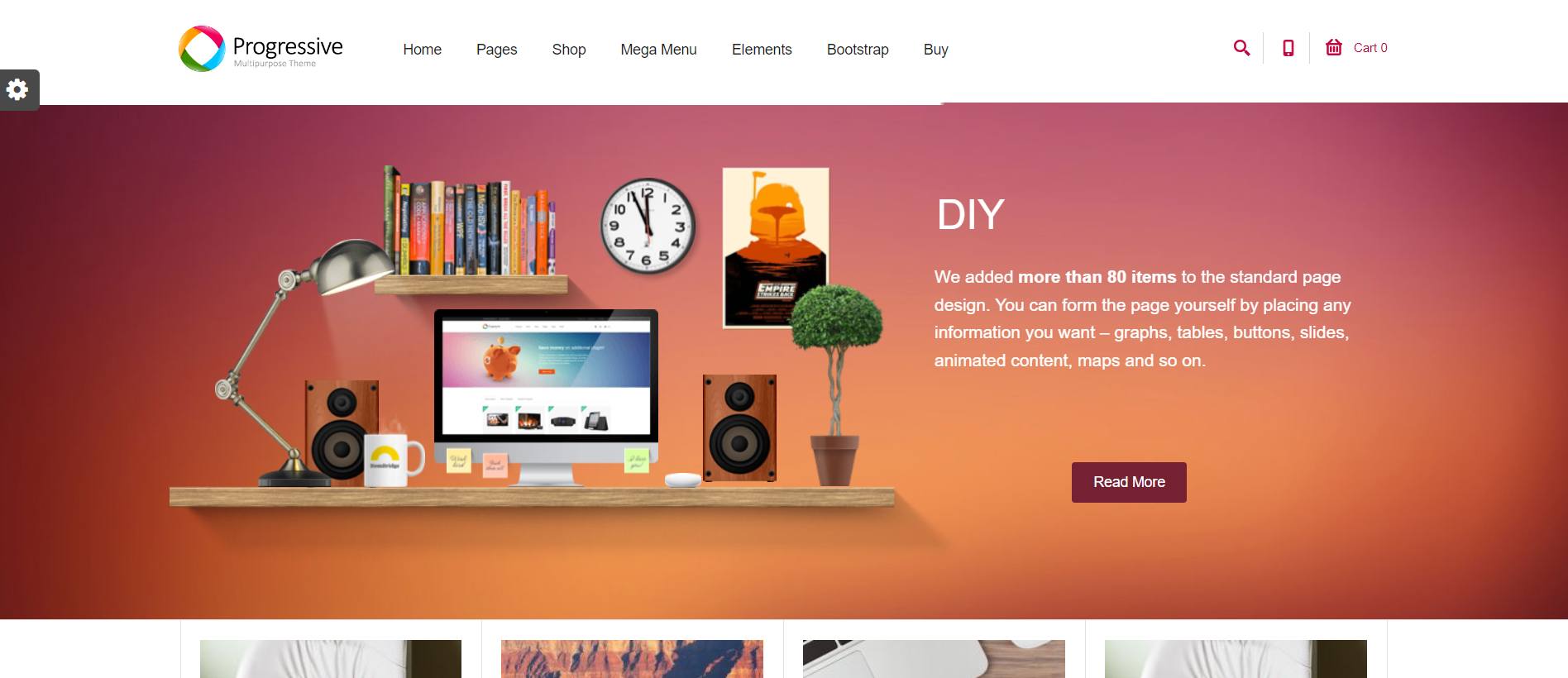
On the other hand, Pixpa offers a wide variety of templates and designs tailored to meet the diverse needs of creative professionals. With an extensive library that includes numerous options, users can easily find the perfect template that aligns with their brand identity and showcases their work in the best light.
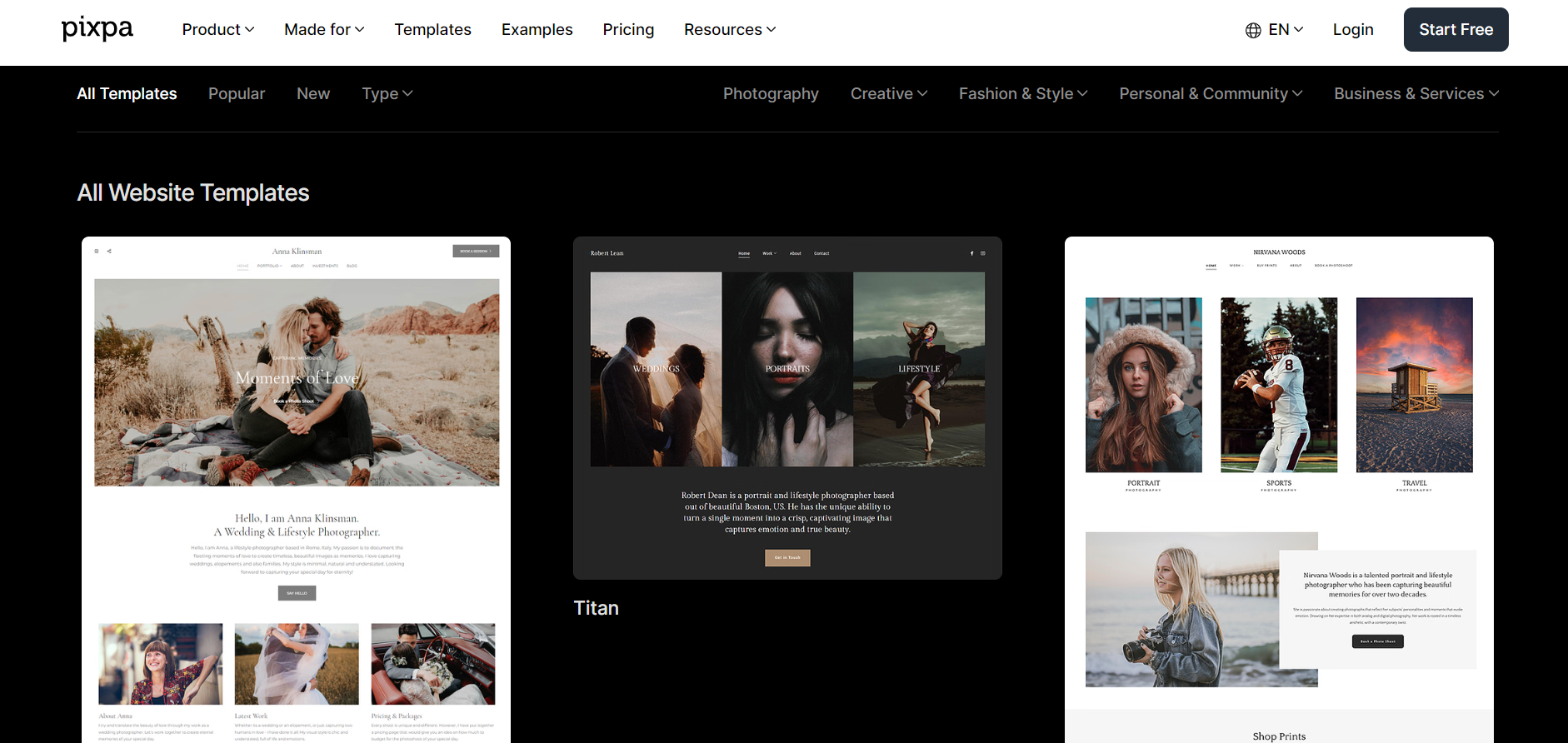
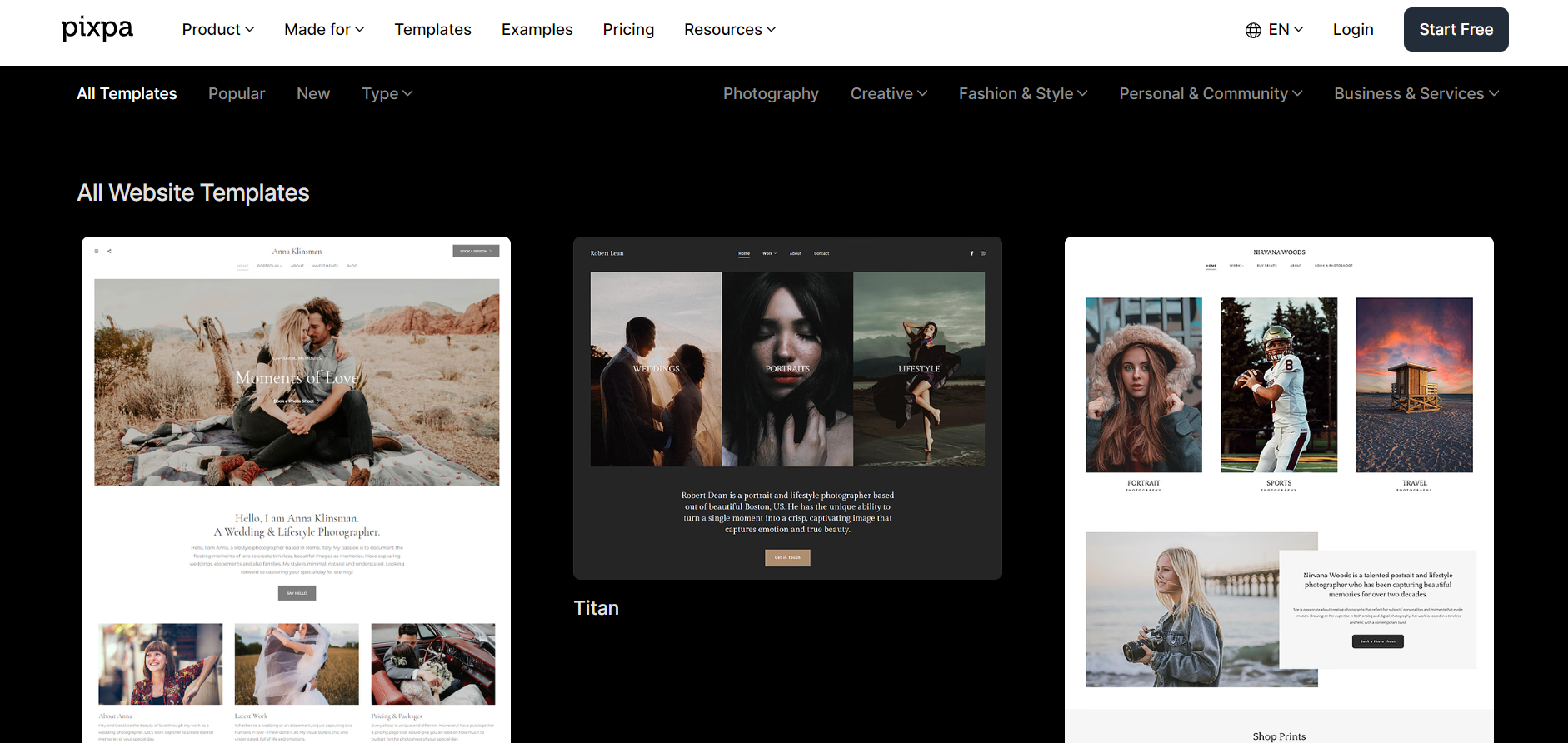
Get a head start on website creation with AI
Create a custom website tailored to your business needs 10X faster with 10Web AI Website Builder!
Ease of use
Ease of useReflects the platform’s overall user-friendliness.Score
Components:
- Learning curve (40%): Quickness and ease of getting started.
- Interface design (30%): Simplicity and intuitiveness of layout.
- User guidance (20%): Quality of tutorials and support.
- Flexibility (10%): Adaptability to various user skills.
 5.4
5.4
 8.4
8.4
🏆 Winner: Pixpa
. Scoring 8.4, Pixpa offers an intuitive and user-friendly interface that allows users, regardless of their technical expertise, to create and manage websites with ease. Drupal, with a score of 5.4, is a powerful platform for building complex websites and applications, but its flexibility comes with a steep learning curve, especially for beginners. If ease of use is a priority, Pixpa is the clear winner in this category.
Learning Resources
🏆 Winner: Drupal
. While both platforms offer solid learning resources, Drupal goes a step further with its extensive official documentation, a vibrant community forum, and a variety of online courses and tutorials, making it easier for users to learn and adapt.
For ecommerce
EcommerceMeasures the platform’s effectiveness in supporting online business activities.Score Components:
- Ecommerce themes and templates (20%): Variety and design of templates.
- Product management (25%): Ease of managing and organizing products.
- Payment options (25%): Variety and convenience of payment methods.
- Ecommerce features (20%): Features for managing an ecommerce store.
- Integration (10%): Compatibility with external e-commerce tools and services.
 7.5
7.5
 7.0
7.0
Drupal and Pixpa both offer ecommerce capabilities, but they cater to different needs and audiences. Drupal, with its Drupal Commerce module, provides a flexible and robust ecommerce solution that can be seamlessly integrated into its content management system. It offers a wide array of features including product management, shopping cart, payment gateway integration, and customizable workflows. However, it has a steep learning curve and may require extensive customization.
Pixpa, on the other hand, offers a range of ecommerce features tailored for creatives and small business owners. It includes an integrated shopping cart, inventory tracking, and the ability to sell both physical and digital products. However, its ecommerce functionalities might be somewhat limited for larger businesses or those with complex inventory needs.

|

|
|
|---|---|---|
|
Ecommerce themes and templates |
7.8 |
6.8 |
|
Product page customization |
8.3 |
6.5 |
|
Payment processing and commissions |
7.5 |
7.5 |
|
POS capabilities |
5.5 |
0.0 |
|
Payment gateways |
7.7 |
7.0 |
|
Product numbers |
7.0 |
5.5 |
|
Additional ecommerce features |
8.0 |
6.0 |
Drupal ecommerce features:
- Shopping Cart and Checkout Process
- Payment Gateway Integration
- Order Management and Invoicing
- Tax Calculation and VAT Support
- Shipping and Fulfillment
- Promotions and Discounts
- Reporting and Analytics
- Security and Compliance
Pixpa ecommerce features:
- SEO and Marketing features
- Secure Payments
- Comprehensive product options
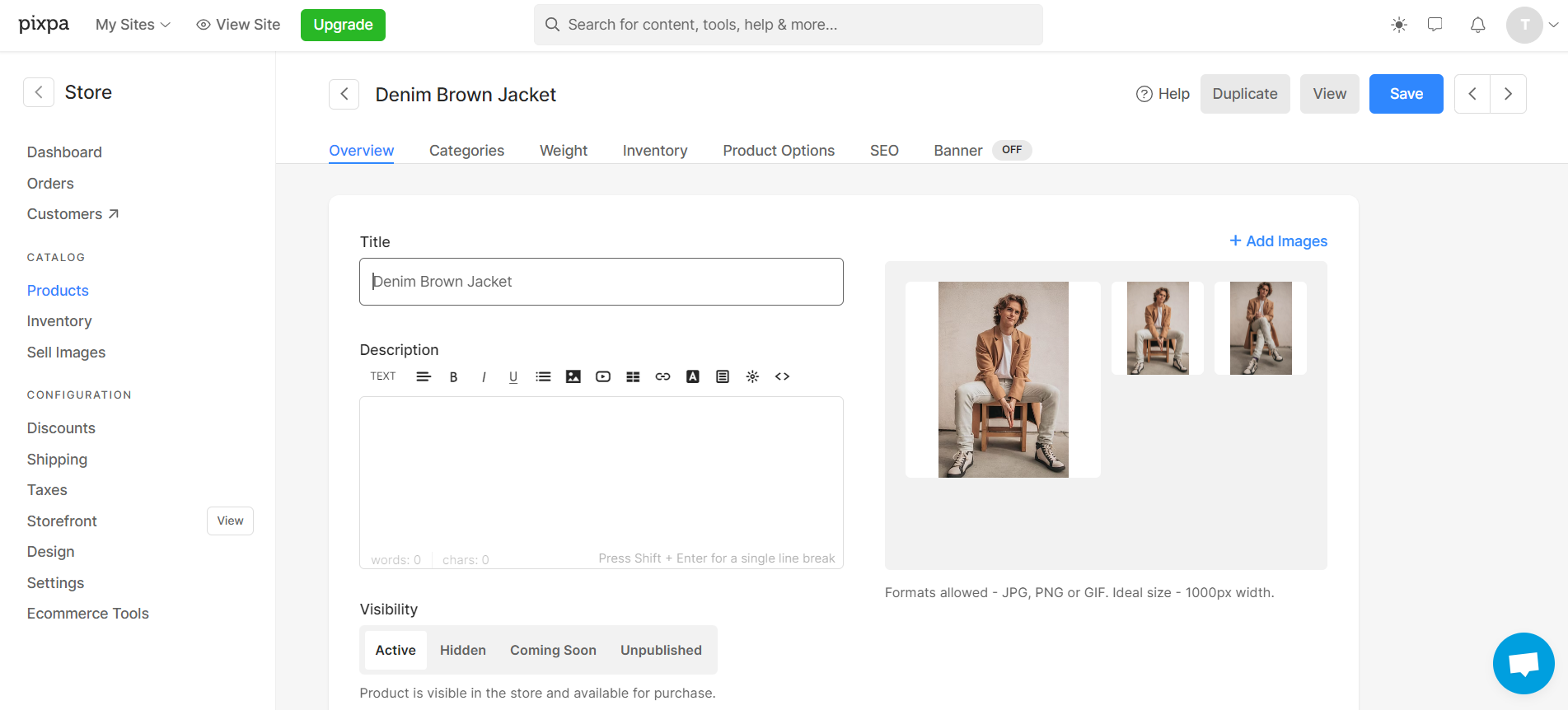
Ecommerce themes & templates
Drupal offers a wide array of eCommerce themes designed to cater to different types of online stores. These themes are built with responsiveness in mind, ensuring that stores function seamlessly across various devices. On the other hand, Pixpa offers a variety of ecommerce-specific templates designed to cater to online stores and businesses. These templates are crafted to showcase products effectively, integrate shopping carts, and provide a seamless checkout experience.
Product page customization
Drupal offers extensive customization possibilities for product pages through its modular architecture, allowing for detailed content types, flexible displays with Views, and theme customizations. Pixpa offers a range of ecommerce product page customization options to cater to various needs. Users can easily manage and display products with options for multiple images, pricing variations, and detailed product descriptions.
Payment processing
Drupal supports a wide range of payment gateways through third-party modules, including popular ones like PayPal, Stripe, and Authorize.Net. Pixpa does not charge commissions on sales, allowing creators to keep all revenue generated, minus any transaction fees from payment processors. The platform supports various payment gateways, including Stripe, PayPal, Razorpay, PayUmoney, and offline payments, to facilitate direct payments into user accounts. However, Pixpa does not have any POS capabilities.
Website Editors
Website EditorsEvaluates the platforms’ website building and editing capabilities.Score Components:
- Customization tools (40%): Range and power of editing features.
- Editor usability (30%): User experience within the editor.
- Design flexibility (20%): Freedom in layout and design changes.
- Update and maintenance ease (10%): Simplicity of updating and maintaining the site.
 7.5
7.5
 7.5
7.5
🏆
Winner: Tie
. Both Drupal and Pixpa scored 7.5 for their website editors, each offering unique strengths.
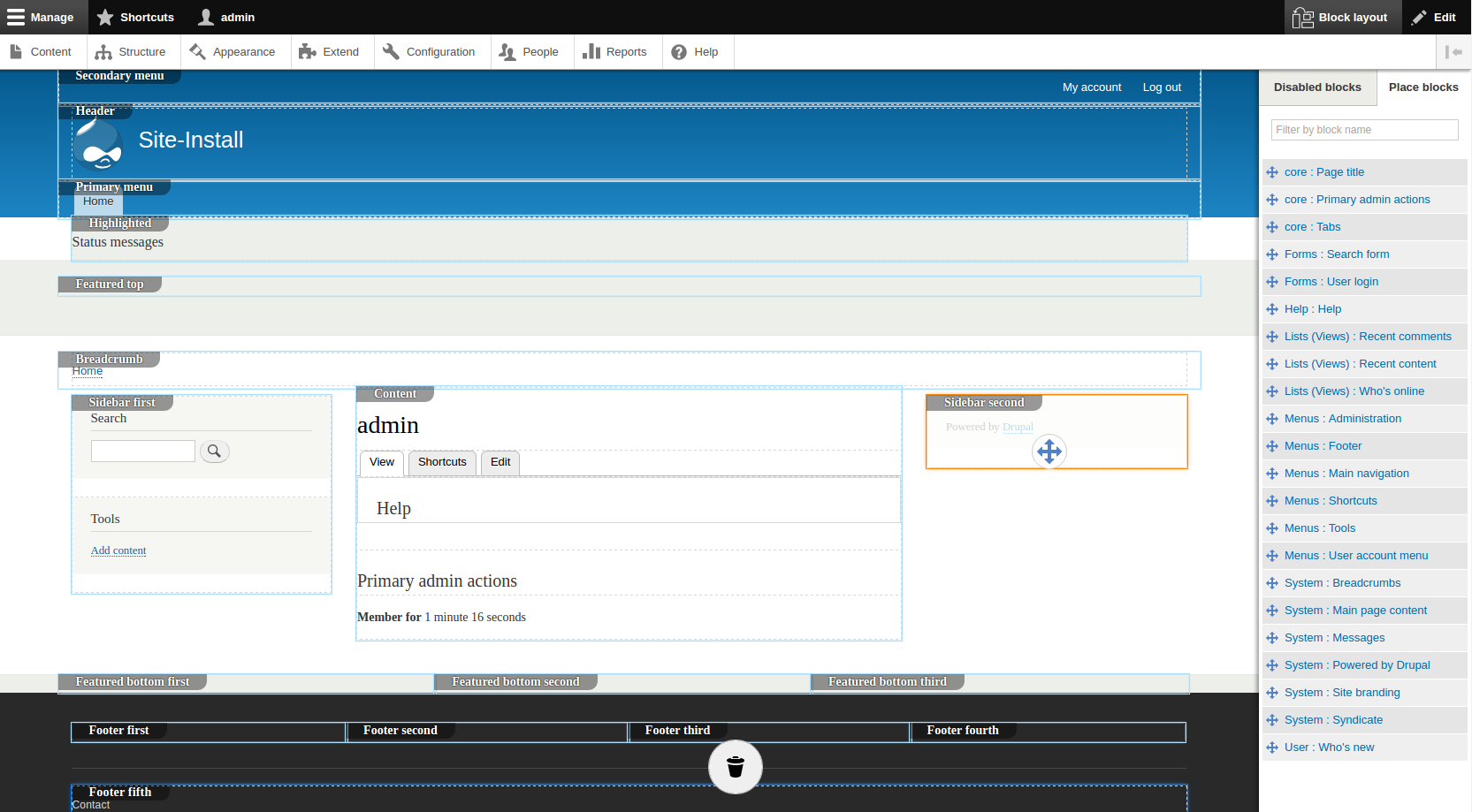
Drupal’s editor, commonly integrated through modules such as CKEditor, offers a wide range of features tailored for content creation and management. It supports rich text editing, enabling users to format text, insert links, images, and media, as well as create tables and lists with ease. The editor is highly customizable, allowing administrators to configure toolbars and options according to the needs of their site. However, it can be challenging for beginners due to its wide range of features and customization options.
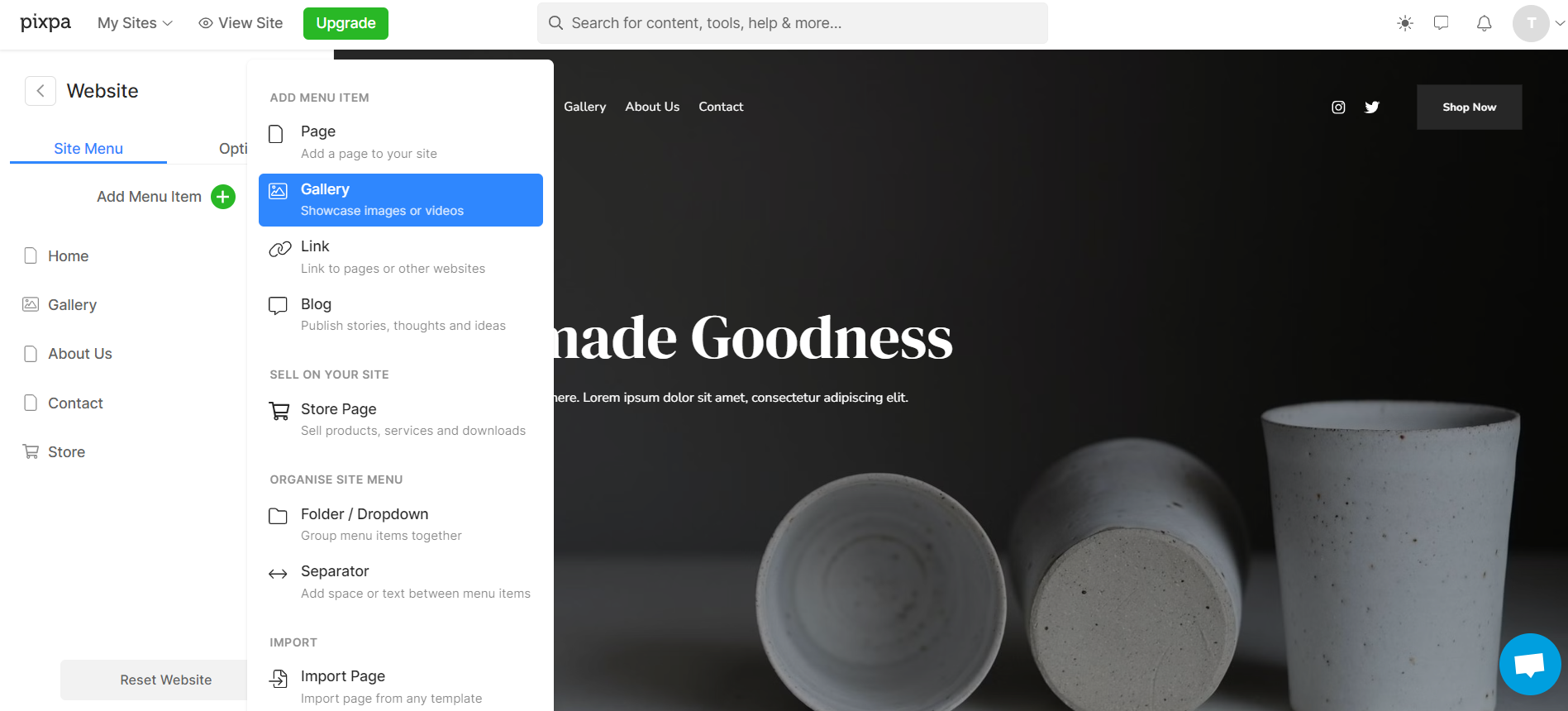
Pixpa, on the other hand, is designed with a user-friendly interface that caters to both beginners and professionals in website creation. Its drag-and-drop editor simplifies the process of designing and customizing websites, making it accessible for users with little to no technical background. Pixpa provides a variety of templates and design options tailored to photographers, artists, designers, and small businesses. Additionally, it includes features such as client galleries, blogging, and SEO tools to help users showcase their work effectively and grow their online presence.
Mobile editor/app
 0
0
 5.5
5.5
🏆
Winner: Pixpa
. Neither Drupal nor Pixpa offer a dedicated mobile editor app. However, Pixpa allows users to edit their website on a mobile browser, albeit with some limitations. This feature is not available in Drupal, giving Pixpa an edge in this category.
Product testing options
Product Testing OptionsAssesses the options for trying out platform features before commitment.Score Components:
- Trial quality (40%): Extent and usefulness of the trial or free version.
- Feature accessibility (30%): How many features are available to test.
- Trial duration (20%): Length of the trial period.
- Ease of transition (10%): Smoothness of moving from trial to paid plans.
 7.1
7.1
 8.5
8.5
Overall Result
:
Pixpa Wins
. Pixpa scores 8.5, outperforming Drupal which scores 7.1. Pixpa offers a 15-day free trial during which all premium features can be tested, and also provides a 30-day money back guarantee. Drupal, being an open-source CMS, offers its software for free, but does not provide a trial version or the possibility to test premium features.

|

|
|
|---|---|---|
|
Free Plan |
Yes (open-source software) | No |
|
Trial Duration |
No |
15 days |
|
Testing Premium Features |
No |
All features during 15-day free trial |
Price
PriceLooks at the cost-effectiveness and value for money of each platform.Score Components:
- Plan value (40%): What each pricing tier offers.
- Transparency and clarity (30%): Clearness of pricing structures.
- Flexibility of plans (20%): Range of options to suit different budgets.
- Hidden costs (10%): Additional expenses not included in the plan.
 5.7
5.7
 9.1
9.1
Pixpa offers more straightforward pricing with several plans and a significant discount for annual subscriptions, while Drupal, being a free open-source CMS, requires separate purchases for domain, hosting, and website builder subscriptions.

|

|
|
|---|---|---|
|
$0-$10 |
No offering at this amount. |
Basic ($8/month): Ideal for personal use with basic website features, gallery images, and blogging. Possible to have up to 10 website pages and up to 200 images. Value for price: 6.0 |
|
$10-$20 |
No offering at this amount. |
Creator ($15/month): Targets creators with more storage and enhanced visibility options. Value for price: 7.0 |
|
$15-$20 |
No offering at this amount. |
Professional ($20/month): For professionals needing ecommerce enhancements and larger storage. Value for price: 8.0 |
|
$20+ |
No offering at this amount. |
Advanced ($25/month): Best for businesses requiring extensive resources and advanced ecommerce tools. Value for Price: 9.0 |
location. As a result in rare cases the prices displayed here can differ from the ones you see on their
websites.
Hosting quality
Hosting
qualityExamines the reliability and performance of the hosting solutions.Score Components:
- Uptime (40%): Consistency and reliability of website availability.
- Speed (30%): Loading times and performance.
- Bandwidth and storage (20%): Sufficiency of resources provided.
- Data centers (10%): Quality and distribution of hosting infrastructure.
 0
0
 5.4
5.4
Winner: Pixpa
. Pixpa offers managed cloud hosting services, utilizing Amazon Web Services for scalable and reliable hosting. Drupal, being an open-source CMS, does not provide hosting services directly, leaving the choice of hosting type and provider to the user. This can be advantageous for users who want full control over their hosting environment, but it also means that the user is responsible for managing and maintaining the hosting environment.

|

|
|
|---|---|---|
|
Do they offer hosting? |
No |
Yes |
|
Type of hosting: |
Depends on hosting provider chosen by user |
Managed Cloud Hosting |
|
Uptime: |
Depends on hosting provider chosen by user | Not provided |
|
Uptime Guarantee: |
Depends on hosting provider chosen by user | No |
|
Data Centers: |
Depends on hosting provider chosen by user | Not disclosed |
Website Speed Optimization
Website Speed OptimizationEvaluates optimization of website loading timesScore Components:
- PageSpeed Score (30%): Google’s score indicating performance optimization.
- Loading Time (30%): The average time until a website is fully interactive.
- Mobile Optimization (15%): Optimization effectiveness for mobile devices.
- Resource Optimization (15%): Optimizing images, scripts, and other heavy resources.
- CDN Usage (10%): Use of CDN to enhance speed across geolocations.
 6.4
6.4
 3.0
3.0
🏆 Winner: Drupal
Both Drupal and Pixpa place a high priority on website performance and page speed, with Drupal offering numerous guides and tutorials on speed optimization and Pixpa focusing on code minification, CDN, HTML caching, server-side rendering, and SEO optimization. However, Drupal gets the edge when it comes to website speed optimization due to its flexibility and extensibility.

|

|
|
|---|---|---|
|
Focus |
User-guided optimization |
Code Minification, CDN, HTML caching, Server Side Rendering, SEO optimization |
|
Performance Tools |
User-guided optimization |
No data available |
|
Key Strategies |
User-guided optimization |
Code Minification, CDN, HTML caching, Server Side Rendering, SEO optimization |
|
Load Times |
Varies depending on optimization and website complexity |
No data available |
|
Page Speed Scores Range |
Varies depending on optimization and website complexity |
No data available |
|
Core Web Vitals Improvement |
Depends on users |
Emphasis on LCP, FID, CLS improvements |
Drupal, being an open-source CMS, offers numerous guides and tutorials on speed optimization, allowing users to optimize almost all aspects of their website. The load times and PageSpeed scores vary depending on the optimization and complexity of the website. The Core Web Vitals improvements depend on the users.
Pixpa, on the other hand, focuses on code minification, CDN, HTML caching, server-side rendering, and SEO optimization. However, there’s no data on Page Speed Scores and load times for websites built with Pixpa. It does place an emphasis on LCP, FID, CLS improvements for Core Web Vitals.
Get a head start on website creation with AI
Create a custom website tailored to your business needs 10X faster with 10Web AI Website Builder!
Plugins and integrations
Plugins and integrationsMeasures the range and effectiveness of additional plugins and integrations.Score Components:
- Variety of options (40%): Range of available add-ons.
- Integration smoothness (30%): Ease of integrating plugins into the site.
- Quality of plugins (20%): Functionality and reliability of the options.
- Custom integration capabilities (10%): Support for custom or third-party integrations.
 8.6
8.6
 6.7
6.7
🏆 Winner: Drupal.
With a score of 8.6, Drupal outperforms Pixpa, which scores 6.7. Drupal’s extensive range of over 51,000 modules, compared to Pixpa’s 100+ apps, gives it a significant edge. These modules allow Drupal to extend its capabilities beyond its core features, enabling functionalities like advanced SEO tools, e-commerce solutions, and custom content types. Pixpa, on the other hand, offers plugins for advanced e-commerce functionalities and integration of external services like email marketing tools and social media feeds. Despite Pixpa’s decent offerings, Drupal’s vast array of modules and higher score make it the clear winner in this category.
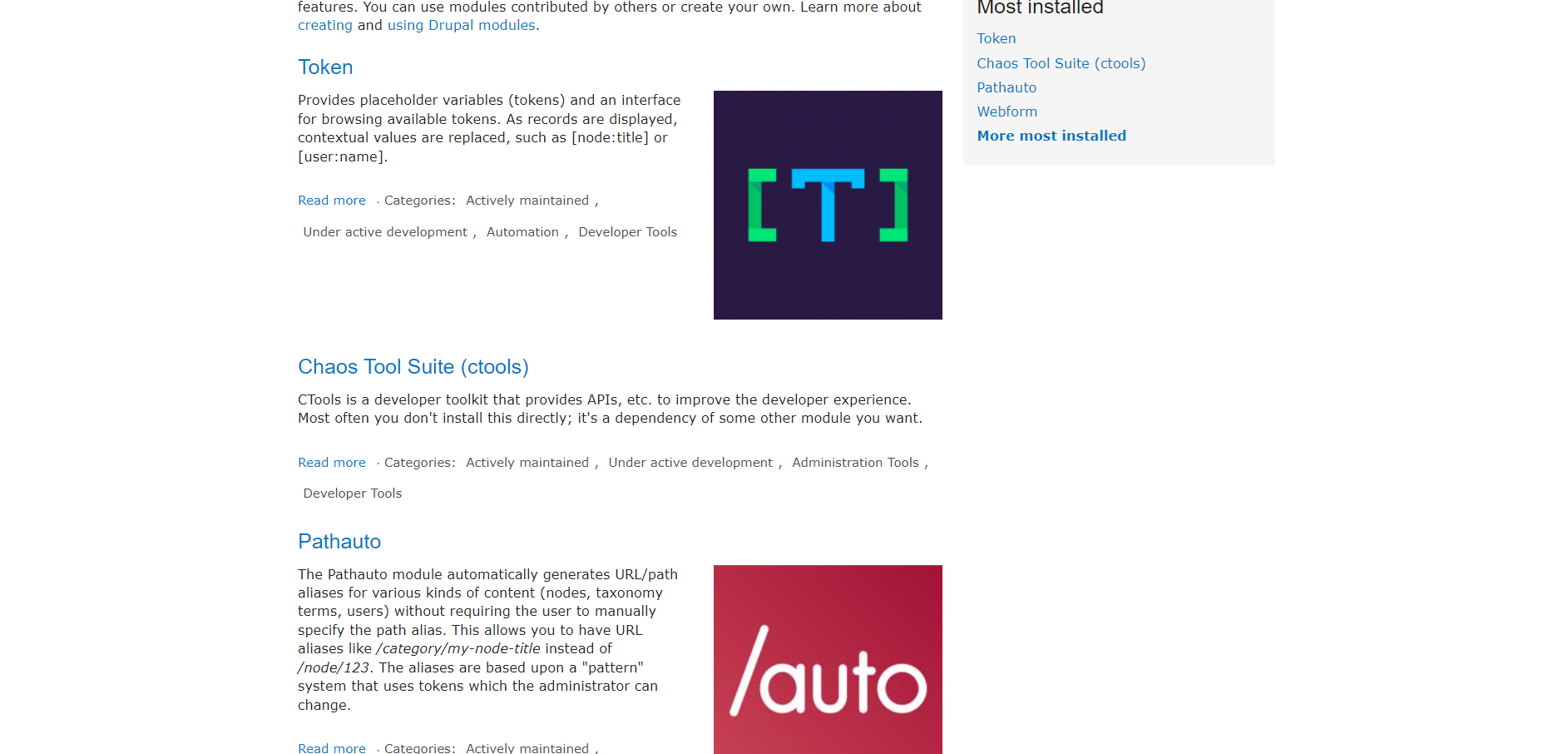
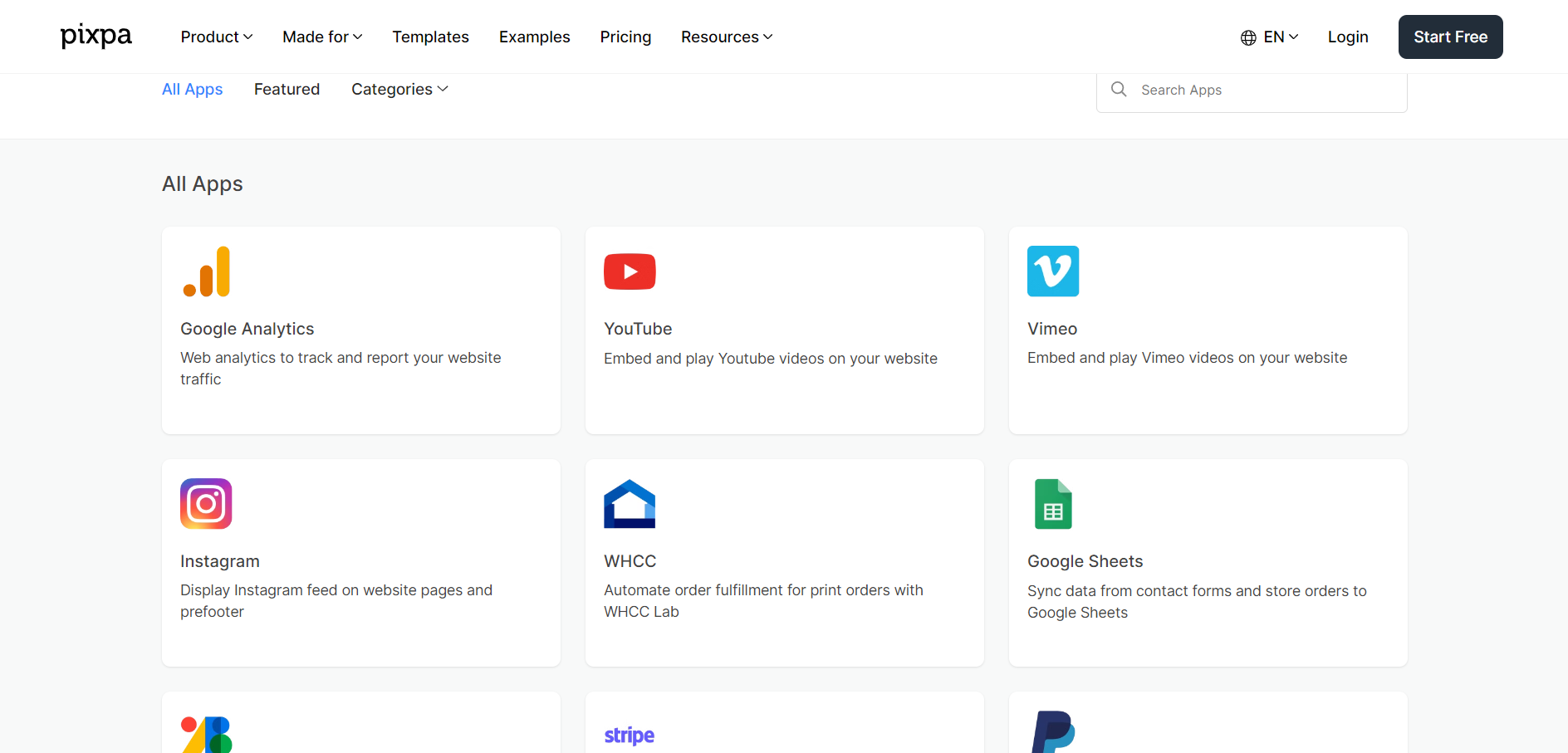
Marketing Features
Design FunctionalitiesRepresents how well each platform allows for creative design and customization of websites.Score Components:
- Template Variety (30%): Range and quality of design templates.
- Customization (30%): Flexibility and options for design alterations.
- User Interface (20%): Ease and intuitiveness of the design process.
- Responsiveness (10%): Adaptability to different devices and screen sizes.
- Innovation (10%): Unique design features and tools.
 8.0
8.0
 7.4
7.4
🏆
Overall Winner: Drupal
. Drupal stands out for its flexibility and extensibility, enabling users to create complex websites with custom functionalities. Pixpa is strong in user-friendliness and integration, ideal for users without coding knowledge.

|

|
|
|---|---|---|
|
SEO Tools |
Yes, with SEO modules such as Yoast SEO |
Yes |
|
Email Marketing |
Yes, but with third-party extensions, such as MailChimp |
Yes |
|
Blogging |
Yes |
Yes |
|
Social Media Integration |
Yes |
Integrated social media buttons and features |
|
Analytics and Reporting |
Yes, basic built-in features, and Google Analytics integrations through modules |
Option to integrate Google Analytics for comprehensive analytics |
|
Ads and Promotions |
Yes, but with third-party extensions |
Offers SEO, social media integration, email marketing, and promotional discounts |
Customer Support
Customer supportEvaluates the quality and availability of support options.Score Components:
- Response time (40%): Speed of support responses.
- Support quality (30%): Effectiveness and helpfulness of the support.
- Availability (20%): Range of support channels (phone, chat, email).
- Resource richness (10%): Quality of self-help and educational materials.
 6.7
6.7
 7.0
7.0
🏆 Winner: Pixpa
. When comparing Drupal vs Pixpa, Pixpa takes the lead in customer support with its 24/7 availability via email and live chat. This ensures that users can get assistance whenever they need it, making it a reliable choice for those who prioritize constant support.
Drupal, on the other hand, offers a comprehensive range of support options, including community support through forums and documentation on Drupal.org, as well as professional 24/7 support services via providers like Drupal Connect. While this provides flexibility, the reliance on third-party providers for professional support may not be as straightforward as Pixpa’s built-in support system.
Security
SecurityLooks at the platforms’ security measures and data protection.Score Components:
- Data protection (40%): Safeguards for user and customer data.
- SSL and encryption (30%): Implementation of secure connections.
- Compliance (20%): Adherence to industry security standards.
- Regular updates (10%): Frequency of security updates and patches.
 8.3
8.3
 8.3
8.3
🏁
Draw: Drupal and Pixpa
. Both Drupal and Pixpa take security seriously, each scoring 8.3 in this category.
Drupal, being an open-source CMS, offers robust configuration options for enhanced protection. It includes built-in mechanisms for preventing common web vulnerabilities and supports advanced security features like two-factor authentication. Drupal’s proactive security approach is bolstered by a dedicated security team that continuously works on identifying and fixing vulnerabilities.
Pixpa, on the other hand, emphasizes private data storage and protection through robust security measures. It employs SSL encryption to secure user data transmission, implements regular backups to prevent data loss, and adheres to stringent privacy policies to ensure user information is safeguarded against unauthorized access. Pixpa’s compliance with GDPR and other data protection regulations reflects its commitment to maintaining high standards of privacy and security for its users’ data.
AI Capabilities
AI capabilitiesMeasures the effectiveness of AI-driven features and tools.Score Components:
- Automation efficiency (40%): Impact of AI on streamlining processes.
- Personalization (30%): AI-driven customization for users or customers.
- AI-Assisted design (20%): Role of AI in website design and functionality.
- Data analysis (10%): Use of AI in interpreting user data and analytics.
 7.5
7.5
 0.0
0.0

|

|
|
|---|---|---|
|
AI Builder |
|
|
|
AI Ecommerce features |
Chatbots, automated content generation, SEO optimization |
|
|
AI content generation |
AI Connect, OpenAI, and ChatGPT integrations |
|
|
Additional AI features |
AI-based search enhancements, content personalization |
|
🏆 Winner: Drupal
. With a score of 7.5, Drupal offers a range of AI capabilities, including chatbots, automated content generation, SEO optimization, and cognitive services for improved user interactions. These features significantly enhance user engagement and satisfaction on Drupal-based platforms. On the other hand, Pixpa does not have any AI capabilities.
User Management
User ManagementAssesses the platforms’ capabilities in managing user roles, permissions, and accessibility.Score Components:
- Role Customization (40%): Flexibility in creating and defining user roles and
permissions. - Ease of Management (30%): User interface and tools for managing users.
- Access Control (20%): Effectiveness of access control measures for different user
levels. - Scalability (10%): Ability to manage a growing number of users efficiently.
 9.1
9.1
 7.3
7.3
🏆 Winner: Drupal
. Both Drupal and Pixpa offer user management features, but Drupal’s flexible permission and role system provides more extensive collaboration and content management possibilities.
- Drupal allows for an unlimited number of users to manage and edit a website, only constrained by server capacity and practical management considerations. Administrators can create various roles, such as “Editor” or “Administrator”, each with customized permissions.
- Pixpa offers a Users and Permissions feature allowing multiple users on Professional plans (up to 5 users) and Advanced plans (unlimited). The site owner can grant edit access to sections like General, Store, Client Galleries, Marketing, Settings, and Administration, customizing permissions based on user roles.
Drupal User Roles and Access Levels:
| Role | Description | Access Highlights |
|---|---|---|
| Editor | Users responsible for content creation, editing, and publishing. | Can create, edit, delete, and publish content; can also manage comments. |
| Moderator | Users focused on site moderation, including comment and user management. | Can approve or delete comments, block users, and manage reported content. |
| Administrator | Users with full access to all administrative features of the site. | Can change site configuration, manage all content, users, permissions, and install modules/themes. |
User Management Score: Drupal 9.1, Pixpa 7.3
Additional Features

|

|
|
|---|---|---|
|
SSL Certificate |
|
|
|
Custom Domain |
|
|
|
Free Custom Domain Included |
|
|
|
International Domains |
|
|
|
Mobile Responsive |
|
|
|
Page Speed |
|
|
|
Website Builder Mobile App |
|
|
|
Convert a Website To An App |
|
|
|
Website Analytics |
|
|
|
Multilingual Sites |
|
|
|
Multiple Users |
|
|
Drupal vs Pixpa: User Feedback
Users appreciate Drupal for its ease of use, security, and flexibility as an open-source CMS, highlighting its ability to scale and support a variety of websites and applications with modern technology tools. The community and documentation are frequently mentioned positives, providing ample support and resources. However, criticisms include a relative lack of plugins and themes compared to competitors like WordPress, the learning curve for customization without coding, and some challenges with installation and updates. The platform is praised for its robust content management capabilities, enabling users to manage content and user access efficiently. Overall, feedback underscores Drupal’s strength in creating secure, customizable, and scalable web solutions, despite some desires for more intuitive UI and easier setup.
Pixpa stands out for its exceptional customer service, easy-to-use interface, and affordable pricing. Users appreciate the variety of templates and customization options available, allowing them to create professional-looking websites tailored to their needs. The responsive and helpful customer support, coupled with the platform’s features like online forms and integrations, make Pixpa a valuable tool for individuals and businesses seeking to establish a strong online presence. Despite some minor issues like limited options for third-party integrations and mobile layout adjustments, Pixpa remains highly recommended for its versatility, professionalism, and overall value.
The making of this blog
We followed a clear, step-by-step process to write and research this article.
Drupal vs Pixpa: FAQ
Which platform is better for complex, customizable websites?
Can Pixpa be used for ecommerce?
Is Drupal easy to use for beginners?
How do Drupal and Pixpa compare in terms of customer support?
Which platform offers better security features?
Do both platforms offer AI capabilities?
Which platform is more suitable for users with no coding knowledge?










